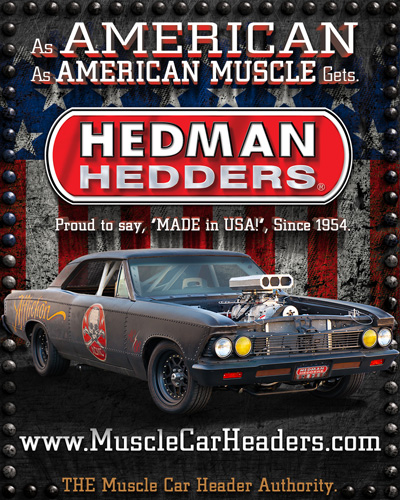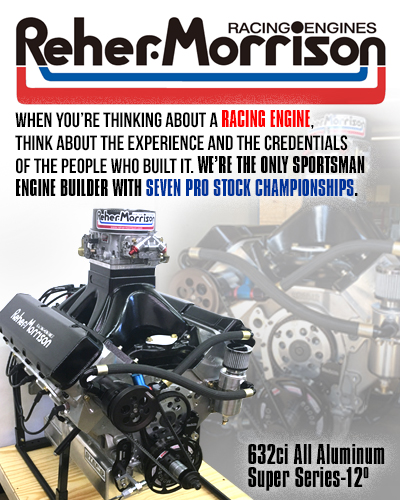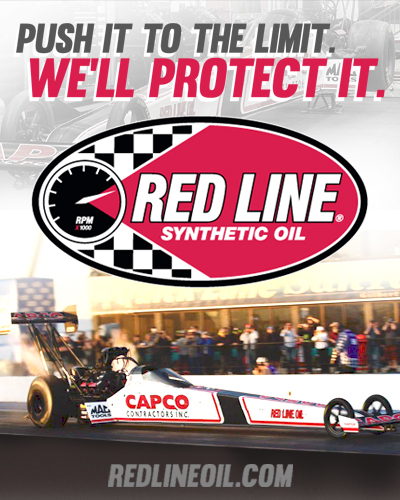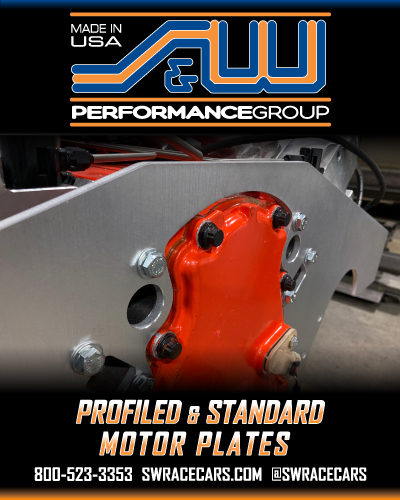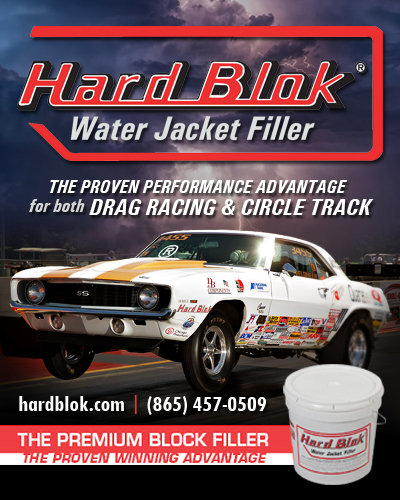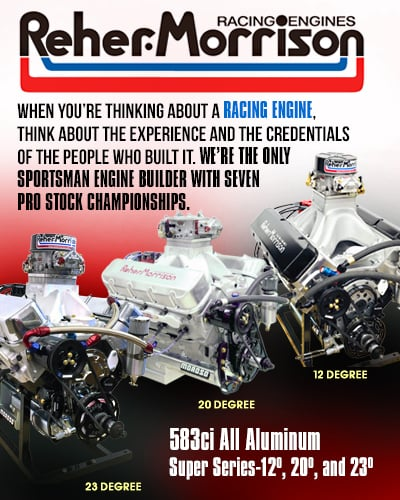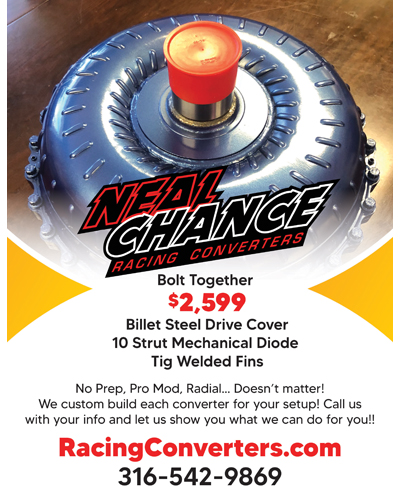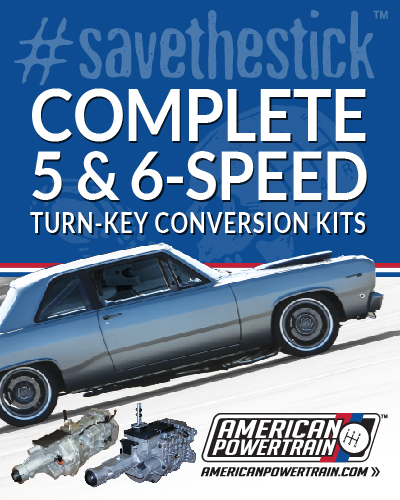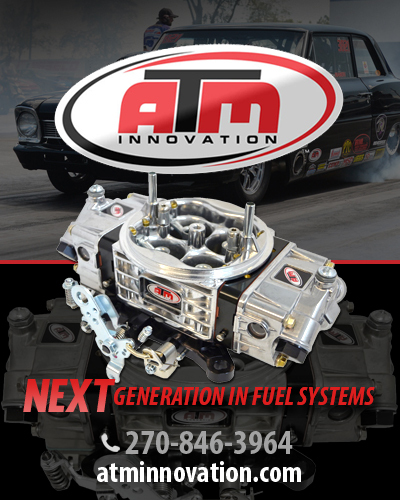NORTHWEST DRAG-RACING KING STILL CAN HOLD COURT

But the Northwest has had a king for decades. Drag racer Jerry "The King" Ruth was racing royalty in a class by himself, on and off the track. Brash, bold, and brilliant behind the wheel, he was the racer to beat -- and if you didn't believe him, he'd tell you that was true. For all his swagger, he had the performance. Baseball had Babe Ruth. Drag racing had Jerry Ruth.


But the Northwest has had a king for decades. Drag racer Jerry "The King" Ruth was racing royalty in a class by himself, on and off the track. Brash, bold, and brilliant behind the wheel, he was the racer to beat -- and if you didn't believe him, he'd tell you that was true. For all his swagger, he had the performance. Baseball had Babe Ruth. Drag racing had Jerry Ruth.
Today Ruth is just as opinionated and fascinating, a talking, breathing history book -- and someone who is content to enjoy his years out of a race car as much as he enjoyed the ones in everything from an altered, gasser, sportsman dragster, Funny Car or Top Fuel dragster. And, perhaps surprisingly, he said he has no intention or desire to feel the thrill of a 330-mph ride.
"The years I have left are golden to me. I want to enjoy them," Ruth said. "I don't want to risk my life doing it. Race cars at that speed and power are dangerous. They're trying to make it as safe as they can, but they'll never make it completely safe.
"Driving a fuel dragster is something you need to be doing every day. You need to be sharp on what you're doing," he said. "Even when you're off [for the winter] and you come back and make a run, it'd be so quick you'd have to sit down for a second and recap what had happened."
These modern nitro cars, he said, "are very, very quick, extremely quick. Do I appreciate that? I sure do. Would I like to drive one? No, not really. I wouldn't do that, because I'm done doing that. I had a wonderful time. I drove for almost 30 years, 27 professionally. I've been on the track thousands of times."
He was at Pacific Raceways this weekend for the O'Reilly Northwest Nationals, displaying and tinkering with his vintage dragster, both still a hit in the pits.
"I have a restored dragster from 1969," Ruth said. "It's a front-engine car. It's got nothing on it. It was just the engine and me. There's nothing on there -- fuel tank, engine and me. That's it -- no safety equipment at all. It's barren."
The differences between that skeletal dragster and today’s complex machines fascinate Ruth, he said.
"The new cars are so high-tech. The way they work, the clutch with the timers and the fuel system, the computer system, the monitoring system, and all the things that are associated with that -- it's mind-boggling!" he said "They are complicated. And I respect them for that. The guys who do that are really good at it. I try to keep up on the technology. So I know what they're doing. They do a nice job with that."
He said the tuning parameters are incredibly precise: "They make tiny changes in all kinds of things. Geez -- does the engine even know that?"
Sought-after tuner Lee Beard, who tunes Steve Torrence's Torrence Racing/Capco Dragster, was a Ruth protégé. And Ruth said he's proud of the credit Beard gave him in a television interview some time ago. He said Beard told the reporter, "He taught me attention to detail. I didn't know how important it was."
Ruth said, "That's a real accurate statement, because these guys are picking at straws now instead of throwing rocks at it. Huge difference."
"The weight is 2350 [pounds], when the cars [in his racing era] only weighed 1500. There's all kinds of safety [equipment] on them now," Ruth said.
"That's all well and good, but there's a lot of downsides to those [safety measures]," he said. "It's harder to accelerate it, obviously. If it wasn't hard, we'd have Greyhound buses and we could all ride along for the trip. And the second negative: It's hard to stop it. You need a lot of parachutes, a lot of brakes, a lot of everything. There's a lot of energy, a lot of momentum in this hurtling vehicle.
"My fuel dragster weighed 1250 pounds at one time. Now they weigh 2350. It's like two of them," he said. "Is it hard to stop it? Hell, yes!"
Track preparation, such a vital part of the qualifying and race-day equations, wasn't something race organizers spent much time considering early on in Ruth's day, he said.
"They prepare them so much better now," he said of today's racing surfaces. "It's way better. And track preparation, when I first started drag racing, there was none. You went up there and staged and left -- that's what you did. You push-started, did no burnouts at all. You did not do anything to enhance the track, except clean the oil up from the previous guy."
Ruth, a rebel without a pause, indicated he enjoyed the days when rules didn't rule.
"There weren't as many rules. Rules have been piled on throughout the years. The original reason I had a Top Fuel dragster is there were no rules -- none at all," he said. "Run what ya brung. How many engines do you want -- one? two? three? ["TV Tommy"] Ivo had four engines in his car. Sideways? Front-ways? In-line? You could do anything you wanted. They basically allowed anything.
"That promoted innovation tremendously. There weren't any rules that limited," he said, lamenting that in today's nitro-class fields, the rules have "the cars all looking pretty much the same. The chassis are almost identical."
No one, for sure, is identical to Jerry "The King" Ruth, although he had his keen Northwest rivals, Ed "The Ace" McCulloch and Dick "The Joker" Kalivoda. And that is what kept Ruth in business even longer via the match-racing circuit.
"I would rather race competitively in a structured field, but I made all my money match-racing," he said. "They booked me in because my name drew people. That's how I made the car pay for itself.”
He said he lived by the line "Big Daddy" Don Garlits always used: "My name puts people in the stands, and I can prove it."
Fellow International Drag Racing Hall of Famer Herm Petersen (who was inducted the year after Ruth was) could vouch for that. Before he became a Top Fuel racer, he was track manager at Bremerton Raceway. While trying to arrange and promote a $1,000 Top Fuel race there one time in the early 1960s, Petersen ran up against Ruth's request for an extra $100 simply for agreeing to show up.
As Peterson told a reporter, "Back then you couldn't have a race without Ruth, so I agreed to pay it." The story went that Peterson, whose biggest payday in his '57 Chevy was $25, figured that rather than shake his head at what seemed so outrageous, he should get in on the action. So he bought and prepared a car and all the right equipment -- the engine from Ruth -- and set out on the tour as one of Ruth's strongest competitors.
Said Ruth, "If I won, I could make about $13,000. Back then that was pretty decent. I'd get $5,000 to go and another $8,000 if I could win it. It kept me in the racing program for another four or five years."
One of Ruth's -- and so many people's -- fondest memories of match racing at its chaotic best was promoter Bill Doner's "64 Funny Cars" events at Seattle and California's Orange County.
"He's the best promoter there was, no ifs, ands or buts," Raymond Beadle said.

This audacious maestro of mayhem called it "64 Funny Cars." The country and the sport never have seen the likes of that, or him, since. They likely won't see ever again the match-racing culture that screamed "extreme" in every sense imaginable.
Doner heard from everyone that he couldn't compete with Seafair, but Ruth said Doner "waded right through it, knocking and punching people out of the way. He didn't care who his competition was. When he got done, not only did he run against Seafair, they changed their event to get away from him" He was blowing their a---- off! He was a showman."
And Seattle International Raceway (now Pacific Raceways) was electric with the roar of engines and a parade of America's most fearless race-car drivers. Doner didn't invent match-racing, but he certainly re-defined it with his shenanigans that made him a one-man riot.
Match racing thrived, thanks to Doner's unforgettable machine-gun delivery and his offbeat brand of magic that packed the grandstands. His relentless commercials became instant classics, and his zany remarks over the public-address system captured fans' fancy.
"We could get 'em so whipped up that if you weren't there, people would throw rocks at you. It was the biggest deal ever!" Doner said.
Sadly, match racing isn't the biggest deal ever any longer. But Doner said people to this day single him out as "the guy who did 64 Funny Cars!" He said, "I'd just as soon that wasn't on my tombstone, but everybody knew what that meant right away."
Ruth was right in the thick of the 64 Funny Cars circus, but without a Bill Doner these days, Seafair at Seattle and the drag races at Pacific Raceways once again are going head to head. This year, though, drag racing held its own Sunday when it came to attendance with grandstands virtually full on both sides of the track.
Life isn't the same as when Jerry Ruth dominated the Northwest drag-racing scene. But it isn't bad. And life is pretty satisfying for Jerry Ruth.
The act of cutting and pasting articles from this publication to a message board is a clear copyright violation as is pulling photos to post on social media sites. All articles and photography published in CompetitionPlus.com are protected by United States of America and International copyright laws unless mentioned otherwise. The content on this website is intended for the private use of the reader and may not be published or reposted in any form without the prior written consent of CompetitionPlus.com.
























